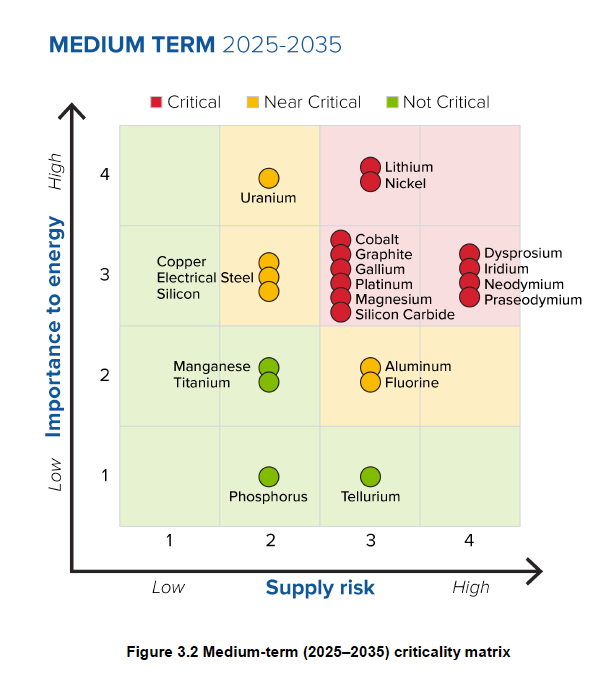
The US Department of Energy (DOE) this week officially added copper to its critical materials list, marking the first time a US government agency has included copper on one of its official “critical” lists, following the examples of the European Union, Japan, India, Canada and China.
2023 Critical Materials Assessment, which evaluated materials for their criticality to global clean energy technology supply chains, focuses on key materials with high risk of supply disruption that are integral to clean energy technologies.
The DOE critical materials list will inform eligibility for tax credits under the Inflation Reduction Act 48C.
The final list includes aluminum, cobalt, copper, dysprosium, electrical steel, fluorine, gallium, iridium, lithium, magnesium, natural graphite, neodymium, nickel, platinum, praseodymium, terbium, silicon, and silicon carbide.

“As our nation continues the transition to a clean energy economy, it is our responsibility to anticipate critical material supply chains needed to manufacture our most promising clean energy generation, transmission, storage and end-use technologies, including solar panels, wind turbines, power electronics, lighting, and electric vehicles,” Alejandro Moreno, acting assistant secretary for DOE’s Office of Energy Efficiency and Renewable Energy said in the statement.
Moreno said that identifying and mitigating material criticality now will ensure that a clean energy future is possible “for decades to come.”
“The Copper Development Association (CDA) congratulates DOE on its thoughtful, forward-thinking analysis that resulted in copper’s inclusion on the Critical Materials list,” Andrew Kireta, Jr., CDA’s CEO, said in a separate statement.
“Copper is a major contributor to US economic and national security, and with copper demand projections doubling by 2035, primarily due to plans for the clean energy transition, electrification and clean water infrastructure. The nation would be defenseless without electricity and copper’s vital role in its generation, transmission, and distribution.”
Inclusion on the critical materials list reflects the reality that copper demand projections will require an increase in domestic production, the CDA noted.
The full Critical Minerals Assessment is seen here.